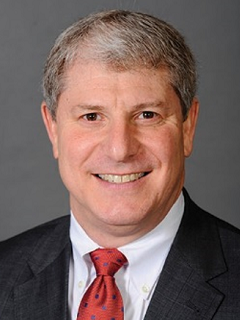A state implements a secure, modern and scalable platform
KPMG and Red Hat implement an extensive cloud transformation to meet the needs of customers.

A state implements a secure, modern and scalable platform
KPMG and Red Hat implement an extensive cloud transformation to meet the needs of customers.
The Tennessee Department of Human Services is modernizing their legacy, siloed, on-premise systems to a more modern, integrated and agile infrastructure. The client wanted to design and implement their new systems using an Enterprise Architecture Services Layer to support all the integration needs for SNAP, TANF, Child Care, Child Support Enforcement, Vocational Rehabilitation Services, and other human services programs.
The combination of domain expertise, IT consultancy, and services from KPMG, coupled with technology know-how, from Red Hat, resulted in the implementation of a secure, modern, and scalable shared service platform built using Red Hat open source components. The implementation of Red Hat OpenShift containers means that workloads can be easily shifted, data can be easily accessed at scale, and applications can be deployed quickly and efficiently across all clouds, in any environment.

IT leaders from the State of Tennessee, Red Hat and KPMG discuss modernization initiatives to create agile environments to better serve citizen services.
Wyatt, State Scoop
State CIOs continue to look for ways to modernize the way they need citizen services. If the pandemic elevated one priority across the board, it is the need for agencies to engage with constituents more fully and to improve digital services that they deliver.
I’m Wyatt Kash with Scoop Newsgroup and joining us to talk about how one state is transforming the way it does business is Wayne Glaus, Chief Information Officer for the Tennessee Department of Human Services. Wayne has served as CIO with Tennessee's human services for the past four and a half years. Prior to working in public service, Wayne held key executive positions in the private sector and has brought his experience to bear in his efforts to modernize the state's approach to constituent services.
Also joining us to provide an added perspective on how open architecture can play a role in redesigning system architectures is Dave Egts Chief Technologist, North America public sector at Red Hat. David works globally with the teams of technical experts to help government clients improve service delivery for open source methods. He guides cross functional teams with relentless focus on ensuring that Red Hat's products in particular and their services address government needs for security, compliance standards, efficiency and technology.
And also joining us is Mark Calem, Managing Director, Advisory at KPMG. Mark has extensive experience in the management and organizational transformation of large organizations and healthcare. Mark has also experience in implementing new and emerging technologies for large scale systems and architecture.
Wayne, David and Mark, thank you all for joining us. Glad to be here. Good morning. So, Wayne let's start with you, can you give us a snapshot of the modernization challenges that you were facing at the Tennessee Department of Human Services and what you were actually hoping to overcome?
Wayne, State of TN
Sure, we come from a fairly typical background, I would imagine for most state agencies in that very heavily legacy based in terms of our platforms, no real integration, very siloed. And our market strategy was very much fragmented, and sort of traditional in terms of meeting customers in locations and physical lobbies, versus more virtual channel strategy where you could meet the customers where they basically want to be met now. So, we were after two things, one was transforming the business model and the way we went to market to meet our customers. Secondly, we needed to do a pretty drastic modernization initiative on the technology that underpins that market strategy.
Wyatt, State Scoop
So, Wayne can you describe why the state chose to implement an open-source platform as part of its modernization strategy?
Wayne, State of TN
Sure, we wanted the flexibility and the scalability of the product, we also wanted to be able touse a product that could grow as our needs change, and flex with us as we enabled the strategy and added in or took out bits and pieces of the architecture.
Wyatt, State Scoop
And then Mark, I'd like to bring you into the conversation here and ask you, can you talk about from your perspective, what was unique about what you saw Tennessee doing its approach to modernization, and maybe why it provides a useful model for other states that take a closer look at it?
Mark Calem, KPMG
Wyatt, what's really interesting and what Tennessee did was unlike other states, sometimes we build monolithic systems. Wayne and his team decompose the architecture to different layers. One layer was an engagement layer, where you would have software that can get you to be the one stop shop for all citizens and for providers. One layer was a shared services layer. So, building common integration and shared services across the department was a program layer, which is where all of the business applications stood. And then there was a data layer where all data would be combined for better analytics reporting feedback. What was so innovative was that two things, not just architecture about the procurement strategy as well. Wayne brought in different vendors for each different layer. KPMG was fortunate enough to work with him on the services layer where we brought in the Red Hat technology. And built in this shared services layer using Red Hat open-source technology to really enable the separation of these layers to build a loosely coupled architecture and make it such that the Department of Human Services could react faster to changes, decouple systems for future growth and long term lower total Cost of Ownership.
Wyatt, State Scoop
That's very interesting. Well, David, let me bring you in now and talk about how you might actually describe how Red Hat and KPMG actually worked together to bring the services layer into their IT architecture. And briefly the role Red Hat played in, you know, to kind of power that integration work.
Dave Egts, Red Hat
Yeah. So, if we take a look at the division of labor, you know, you think about it KPMG specializes in the business of government. And Red Hat specializes in the business of open technologies. And together, we're helping government agencies like Tennessee, accelerate the digitization of their services in ways they really never thought possible. So specifically, you know, in this case, Red Hat provided an open substrate for KPMG and Tennessee to innovate on top of, and in this case, it was OpenShift. And so, by standardizing on that open platform, KPMG and Tennessee, they're able to reallocate a lot of the time that they would have ordinarily spent on integration for various cloud providers, right, to focus instead on innovation and improving service delivery. And this helps, and lets everybody, like in the case of KPMG, it allows them to address the needs of all 50 states with less rework. And it also allows KPMG customers to benefit sooner from that accelerated innovation because they are spending less time reintegrating and more time innovating.
Wyatt, State Scoop
Well, Wayne I'm interested to hear - So how did this integration effort and this open-source approach ultimately help you modernize and ultimately also deliver better services to your constituents?
Wayne, State of TN
The key benefit was speed to market and reaction time, particularly during the pandemic reaction time was very, very critical, given all the programs that got launched, and all the additional customers that the agency picked up, given the impact of the pandemic across the state. So, our ability to react quickly, cleanly, but most importantly, effectively, was really key to our approach. And given that we'd already started that approach. We reacted probably the fastest within the state on pandemic related things. But we also rolled those learnings into future state. So, our go to market strategy now our customer engagement strategy, all of that is driven by our ability to react quickly and effectively and to utilize many more channels than we had available to us prior to this sort of architecture.
Wyatt, State Scoop
Interesting as well. Well, Mark, I know states have all different situations, where are you seeing maybe the greatest potential for other states to use open-source platforms the way Tennessee did to improve constituent services?
Mark Calem KPMG
Yeah, I think the challenges that Tennessee faced are kind of very similar across other states as well. And as states modernize their infrastructures and their programs to provide the benefits that Wayne talked about, they need to rethink things. Because the days of just being single cloud, the days of monolithic systems are gone. The future is multi cloud, hybrid cloud, the ability to exchange data, and the technologies and the architecture that Wayne's developed that both Red Hat and KPMG have helped through the use of open source, enable this layer that can suddenly be cross cloud, that could accelerate integration. It's also about building a set of shared services. So, services that you need across your department, regardless of what cloud they're on, build them once, reuse them over and over again. And that's what Wayne did. Security services, business rules, engines, process automation, workflow, built once, and now all your systems can use those same set of services over and over again, regardless of where they sit in the cloud on prem or whatever. They can really benefit from that.
Wyatt, State Scoop
Yeah. And then lastly, David, how else might states benefit from adopting open-source platforms, particularly when it comes to improving constituent services?
Dave Egts, Red Hat
Yeah, I want to expand on what Mark said and, you know, open source really let states keep their options open, right. So, they don't have to worry as much about guessing right about picking the right cloud platform, especially as you know that the state's needs change. And also, the cloud provider features and pricing changes all the time, too. So, this is all you know, open source allows states to run everywhere they want to be and that's why open source is so powerful because it shifts a lot of that control back from a vendor's hands into the hands of the government.
Wyatt, State Scoop
And I'm sure that the public and constituents all get to see the benefit of that as well. Well, Wayne, David and Mark, thank you so much for joining us to share your respective insights around the adoption of open-source approaches and ways that that's helping to modernize citizen services. Thank you.
